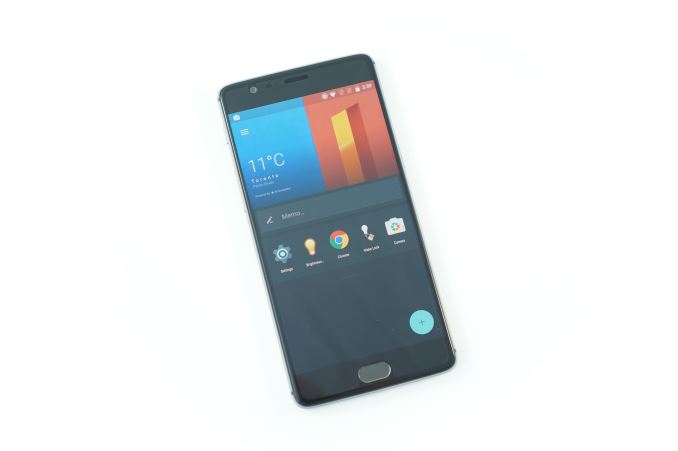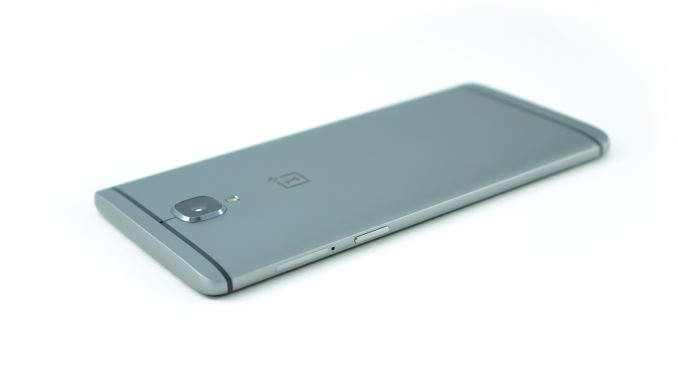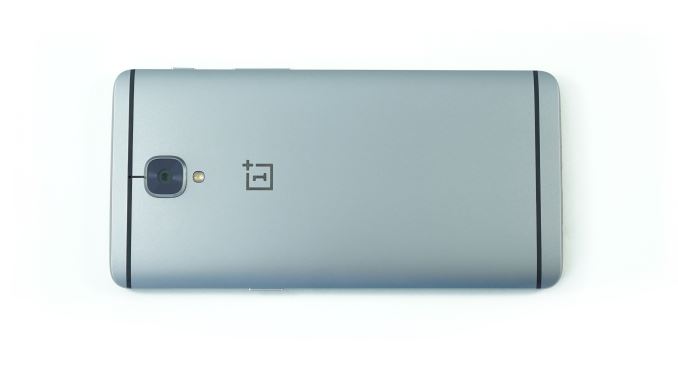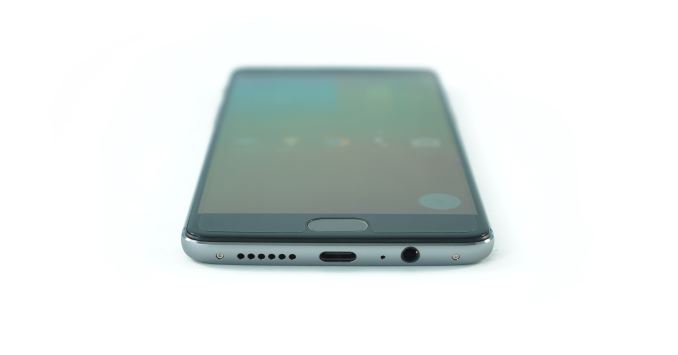The OnePlus 3 Review
by Brandon Chester on June 20, 2016 8:00 AM EST- Posted in
- Smartphones
- OnePlus
- OnePlus 3

In 2014 OnePlus was a company that was basically unheard of. Despite that, there was great anticipation in the Android enthusiast community about a new smartphone coming from this new company. Their first smartphone ended up being called the OnePlus One, and it was arguably the first device in a trend of smartphones that tried to bring flagship specifications to devices with prices much lower than what the big players in the smartphone market demanded for their best smartphones. The OnePlus One certainly wasn't perfect, but it showed that it was possible to produce a high spec smartphone for hundreds of dollars less than Android flagships, and what OnePlus needed to improve on was their execution.
A year came and went, and OnePlus came out with the OnePlus 2. This was during a time where the Android market was still struggling to deal with the issues posed by Qualcomm's Snapdragon 808 and 810 SoCs, which put Android performance improvements at something of a standstill. In the case of the OnePlus 2, I discovered that OnePlus had put mechanisms in place that reduced web performance even further, and as I reviewed the OnePlus 2 I discovered concerning regressions in other aspects like the phone's display, and its battery life.
Moving into 2016, we now have the OnePlus 3. At this point OnePlus now has a better variety of hardware to choose from, and they should know exactly what to fix from the OnePlus 2 to make a great smartphone. However, the smartphone market gets more competitive with each year that passes, and it's no longer enough to simply put good specs in a device and fail with the execution. Finding out how well OnePlus executed with the user experience is what I'm here to tell you, but before getting in to that, it's important to see how the OnePlus 3 compares to its predecessor.
| OnePlus 2 | OnePlus 3 | |
| SoC | Qualcomm Snapdragon 810 | Qualcomm Snapdragon 820 |
| GPU | Adreno 430 | Adreno 530 |
| RAM | 2/4GB LPDDR4 | 6GB LPDDR4 |
| Display | 5.5" 1920 x 1080 IPS LCD | 5.5" 1920 x 1080 PenTile AMOLED |
| Size / Mass | 151.8 x 74.9 x 9.85mm, 175g | 152.7 x 74.7 x 7.35mm, 158g |
| Battery | 3300 mAh | 3000 mAh |
| Rear Camera | 13MP 1.3 μm OmniVision OV13860 f/2.0 | 16MP 1.1 μm Sony IMX298, f/2.0, OIS |
| Front Camera | 5MP 1.4 μm OmniVision OV5648, f/2.0 | 8MP 1.4 μm Sony IMX179, f/2.0 |
| Storage | 16/64GB eMMC | 64GB UFS 2.0 |
| I/O | USB 2.0 Type-C connector, 3.5mm audio | |
| Connectivity | 802.11a/b/g/n/ac + BT 4.1 USB-C, GPS/GNSS |
802.11a/b/g/n/ac + BT 4.2, USB-C NFC, GPS/GNSS |
| Price | $329 (3GB/16GB) $389 (4GB/64GB) |
$399 (6GB/64GB) |
At least at a high level, the OnePlus 3 shows a great deal of promise. The move from Snapdragon 810 to 820 will certainly improve performance, especially when you consider the app detection that OnePlus was doing which crippled web performance on the OnePlus 2. There's also a whopping 6GB of RAM. I do wonder if 6GB is overkill only because the number of apps that people actually use on a daily basis may be smaller than the number that 6GB can actually keep resident in memory. It's also worth noting that there is an energy cost to adding more RAM as each memory cell has to be periodically refreshed to maintain data integrity.
OnePlus has moved to an AMOLED display with the OnePlus 3. While it was once the case that AMOLED displays that weren't on Samsung devices exhibited low brightness and poor calibration, recent AMOLED devices have reversed that trend entirely. However, moving from a 1080p RGB LCD to a 1080p PenTile AMOLED does come with a reduction in effective resolution, and I'll talk about that more in the display section.
With the cameras, OnePlus has gone back to Sony sensors. The front-facing camera moves to 8MP, and the rear-facing goes to 16MP. Lenses stay at f/2.0 which I think is a smart move given some of the problems we've seen regarding sharpness and distortion on phones that have moved to even wider apertures. There's more to the camera story than what you see on paper, and I'll be covering that as well.
As for other changes, there's now only one version of the phone which is 6GB of RAM and 64GB of UFS 2.0 storage for $399. I almost never saw the 16GB OnePlus 2 for sale anyway, so this isn't really some sort of pricing upset. As for connectivity, you still have a USB 2.0 based Type-C connector and 802.11ac WiFi, but NFC has made a return which means the OnePlus 3 will be usable with Android Pay and other applications that make use of NFC.
Design
One of the big changes OnePlus has made with the OnePlus 3 is the industrial design. Nothing about the OnePlus One's design was really exceptional, but given that it was bringing many flagship specs to a phone that costed several hundred dollars less than flagship phones of the time it was entirely understandable. With the OnePlus 2 the average price of OnePlus's flagship phone went up, but OnePlus had made some changes to the external design. The phone gained a metal frame but retained its sandstone back cover. To be honest, I wasn't really a fan of the OnePlus 2's design. The metal frame didn't do much to improve how high quality the phone felt, and the back cover wasn't coarse enough to really have an impact on how grippy the chassis was. On top of that, the fact that the display layer of the phone had a plastic border that sat above the metal frame looked kind of cheap, and the increased thickness and mass actually represented regressions from the OnePlus One in some respects.
With the OnePlus 3, OnePlus has moved to an aluminum unibody design. In doing so they've addressed pretty much all of my issues with the OnePlus 2. Starting with the back of the device, you no longer have the sandstone finish. I'm sure many people will disagree, but the OnePlus 2 back cover didn't help me with gripping the phone at all. The OnePlus 3 feels like a much higher quality device, particularly because there are no longer three distinct sections of the phone that all have seams and gaps between one another. The unibody design means the back cover is no longer removable, but as I said in my OnePlus 2 review I think the removable back cover on OnePlus devices was a complete waste anyway because it only served as a way to access the SIM slots, which could have been implemented as a tray on the side of the device. With the OnePlus 3 they've done exactly that, and so the removable back cover isn't needed.
The back cover sees some additional changes, with some being independent of the move to an aluminum chassis. There are now lines for the antennas on the top and bottom of the phone, and the top line connects to the square-shaped camera sitting beneath it, which reminds me of the HTC One M9. On the topic of the camera, there's no longer a separate island that the camera and flash sit upon, which I think is a big improvement on what I felt was one of the least appealing visual aspects of the previous OnePlus devices. The camera does stick out significantly more than it did on the OnePlus 2 which is just a consequence of the significant reduction in thickness, and OnePlus has actually decreased sensor size with this generation so the hump likely would have been even larger if they hadn't. The only other thing to note about the camera area is that there's now just a single LED flash and the camera uses PDAF, while the OnePlus 2 had a dual LED module and an IR module for the laser autofocus.
On the left side of the phone you have the volume rocker and the mute switch, while the right side has the sleep/wake button and the NanoSIM slots. I appreciate that OnePlus has kept their volume rocker on the left side of the phone, and I think the three stage mute switch is an underappreciated feature that more manufacturers should adopt. You can see above that the phone's edges only curve to a point, at which point you have a chamfered edge that meets the display glass. I like the appearance that this provides, but it does mean that you don't have the same smooth feeling when swiping near the edges of the display that you get on a device like the iPhone 6s Plus.
The bottom of the phone is changed from the OnePlus 2. There are no longer any antenna lines since they wrap around the left and right sides of the phone, and there aren't holes drilled on both sides of the USB Type-C port which has allowed the 3.5mm audio jack to be brought to the bottom of the phone. One thing that bothers me is how the 3.5mm jack isn't centered like the rest of the ports and screws, which kind of ruins the visual uniformity. You can also see OnePlus's pre-applied screen protector in the image above. It doesn't quite cover the entire display from edge to edge, and I noticed that a great deal of dust was collecting around the edges so I ended up removing it. It's just your typical plastic screen protector rather than a glass one anyway, although the fact that OnePlus throws it in for free is a nice gesture.
The front of the phone is similar to the OnePlus 2, but it's clear how the overall shape of the phone has changed to become more curved, while the OnePlus 2 was similar to the Nexus 5 in how it had flat sides meeting curved ones at hard angles. I have to say that I prefer the appearance of the OnePlus 3 in this regard, but it may be seen as less unique than the OnePlus 2. As for what's on the front cover, you have the earpiece and front-facing camera on the top, with three capacitive keys on the bottom. The middle key is the home button, which also acts as a fingerprint scanner in the same manner as the OnePlus 2's home key. In my experience the sensor has been quite accurate and just as quick as anything else on the market, and having it on the front of the device provides a better experience than rear-mounted scanners.
OxygenOS provides many ways to customize the phone, so you also have the option to switch the order of the back and recent apps buttons, and if you want software keys OnePlus provides that as an option as well. I covered the major points of OxygenOS in my OnePlus 2 review, and I haven't seen any major changes to it so I'll just refer to that rather than going over the features a second time. The one thing that has changed is that the UI no longer feels unbearably slow and sluggish, and in the next section you'll see exactly why that is.













176 Comments
View All Comments
pcpoweruser - Monday, June 20, 2016 - link
You are simply not getting something - display accuracy has very little to do with sRGB color space itself. sRGB is a relatively dull, limited colorspace that defines collors far bellow what human eyes can see and it only exists because wider gamut was problematic to achieve on pre-OLED displays. AdobeRGB (that OLEDs can reach) is far richer, vibrant closer to life color space.Personally, I would never use modern, wide-gamut OLED display in crippled sRGB mode that essentially limit panel ability do render deep, saturated colours, it is just not 'fun'. Many of these colors are just UI elements, icons, etc - they look much nicer with wide gamut. Yes, I cannot believe that Android still does not have any form of color management built in and think it is a total disgrace. As a result, the cost of using full abilities of wide gamut displays is that photos (typically designed to be shown on sRGB display) will look oversaturated, even if they are embedded with proper sRGB/AdobeRGB profile, as Android simply have no way to process it. However, to be fair, I a can live with this - I am not a photographer and do not need accurate saturation in photos on my mobile.
But to the point: AdobeRGB (that many OLEDs target) is essentially extension of sRGB, so on OS that does not understand color management, photos with sRGB profile would simply look more saturated - but the colors would be still accurate (i.e certain share of red would be still the same shade, just more intense). NTSC that Oneplus 3 panel seems to target is a different gamut, that is 'shifted' in space (look at CIE graphs), so for instance orange might become red - and this is a problem.
Additionally, there is another aspect of accuracy: balance of individual primary colours at various intensity steps (so called 'greyscale') - and this is quite broken in Oneplus 3 too (yes, I have got one) - blue is dominating heavily pretty much all the intensity steps.
Combined with a very high color temperature ('balance' option in the UI does not help much, it just adds hideous pink hue) and low ~800p real resolution thanks to pentile pattern (with all the artifacts like diamond-shaped fill and color fringing at hight contrast edged) the result is simple - the display is objectively very bad.
My point of reference is to N6P panel, which is absolutely gorgeous, accurate and ultra sharp in comparison.
It is a shame, as otherwise phone is great (build quality, SoC, fast storage), but looking at the screen is just too painful for me - so I am sending it back.
I understand that possibly less than 1% really care about quality of the display, but I am one of those people and totally agree with the reviewer here.
grayson_carr - Tuesday, June 21, 2016 - link
You've missed my point entirely, which was to request that Anandtech provide measurements for displays as they are calibrated out of the box. By default, the Galaxy S7 and Nexus 6P are just as bad, calibration wise, as the OnePlus 3. They are not calibrated to any standard. Not sRGB, not Adobe RGB. Yes there are sRGB modes on both the S7 and 6P, which are what Anandtech tests and publishes results for, and there is also an Adobe RGB mode for the S7, but when you take those phones out of the box, the calibration of each is truly awful, just like the OnePlus 3. Uhg, and you're acting like the 6P has some great panel. God, the 6P screen is sharp and accurately calibrated (in sRGB mode), sure, but it has a horrible grainy look to it and has awful sunlight visibility in sRGB mode (sunlight visibility in the default inaccurate mode is fine, but it's truly terrible in sRGB mode). I own an S7 Edge, OnePlus 3, and Nexus 6P because I'm an Android app developer, so I can compare them all side by side here.pcpoweruser - Tuesday, June 21, 2016 - link
You are missing my point too: 6P in default mode is fine - it targets colour space similar to AdobeRGB, so colors are just more saturated, but they are still the same colors. There is no reason to use sRGB mode on 6P (as you mentioned it impacts maximum brightness badly - like any color curve adjustment) unless you are a photographer and work with sRGB photos on your workstation - by using sRGB mode you are simply crippling display capability to show wide gamut.Oneplus 3 is different, by default it targets odd gamut that actually shitfs colors and make them very different colors - this does not happen 6P. Not to mention terrible white balance and greyscale, which is just fine on 6P in non-sRGB mode. Grainy look on 6P display: is this a joke? Maybe with some dodgy screen protector. It is one of the sharpest, cleanest displays and makes Oneplus 3 look absolutely terrible in comparison.
grayson_carr - Wednesday, June 22, 2016 - link
"colors are just more saturated, but they are still the same colors"What? Not to me. If you take a color and make it way more saturated, it is not the same color. I guess you're saying green will still be green, etc, but just more saturated. I get that. But it still makes photos look untrue to life if the colors are all oversaturated. And even if I accept your explanation for the 6P, what about the S7 and Note 5? The default adaptive mode on those phones is NOT sRGB nor Adobe RGB. It's Samsung's made up colors that they think look good and it's no better than what we see on the OnePlus 3. If Anandtech would test these modes we would see that, which is why I want Anandtech to start testing and discussing them.
Buk Lau - Monday, June 20, 2016 - link
maybe because other so called "reviews" don't even have a colorimeter to properly test displays? subjectively saying "oh it looks good to me" doesn't mean much to everyonegrayson_carr - Monday, June 20, 2016 - link
The display is only 'bad' from a color accuracy standpoint. I actually have the phone, and also own a Galaxy S7 Edge and Nexus 5X. Subjectively, if you hand a random person on the street all three of these phones, they would probably say the OnePlus 3 display looks the best. The Nexus 5X is technically the most accurate, but looks washed out next to the other two to your average person who doesn't deal with color accurate displays for a living. The S7 Edge (mine anyways) has whites that lean too much towards green, so it looks kind of unnatural. I thought the lower resolution of OnePlus 3 would bother me because the display is pentile, but honestly, the screen density it set such that I never bring the phone close enough to my face to notice. Also, while I don't have a measurement device, I think the white balance of my OnePlus 3 is not as cool as the one Anandtech received. Comparing it to other phones, I would guess my sample is more in the 7500K range. Brandon also seems to have missed the color temperature slider in the display settings. I wonder if he had adjust the color temperature a bit warmer if the color measurements would have been a little better.grayson_carr - Monday, June 20, 2016 - link
Oh, I forgot to mention, if you like how the Galaxy S6, S7 and Note 5 displays look in their default adaptive display mode, you will probably like how the OnePlus 3 display looks because it looks very similar to that. Unfortunately, Anandtech and everyone else only test the color accuracy of Samsung displays after changing the display mode to basic / sRGB, which almost no one uses in reality. So you will hear the Galaxy S7 display is suuuupppppeeeerrrr accurate, blah, blah, blah!!! But if you go out and survey actual Galaxy S7 owners on the street, 99.9% of them will be using the default display setting that is not accurate at all and probably no more accurate than the OnePlus 3 display, yet people still say it looks great. So bottom line, don't write of the OnePlus 3 because Anandtech hates the display.Buk Lau - Tuesday, June 21, 2016 - link
it's ok, we get it, you are trying to defend your purchase. Idk if you have read any of those reviews you mentioned so far (probably not as you are still saying these), but in N6P review they clearly gave out results for both profiles. also what you are forgetting is that this is not simply a color profile issue, 1+ just straight up didn't calibrate these panels out of the box. what people like is different from what something objectively is. you can like the 1+3 and its poorly calibrated panels, but that doesn't change the fact that the panel is inaccurate. there's a reason why these standards exist, and just because you don't like the standard doesn't mean it's important.grayson_carr - Wednesday, June 22, 2016 - link
Why would I need to defend my purchase? I own a Galaxy S7 edge and will be keeping it as my main phone and returning the OnePlus 3. I only bought a OnePlus 3 because I am an Android app developer and phone enthusiast and just like trying all of the new phones. That's great that they gave out results of both profiles for the 6P, but if I remember correctly, it's only because they tested the default profile before they discovered the sRGB mode. They never test the default profile of Samsung phones. I want them to call Samsung out for shipping phones with displays that are so inaccurate out of the box. Yeah, it's great that Samsung gives you an accurate profile setting, but when you just test that and don't even mention the default profile, it confuses people and makes most people think Samsung displays are accurate right out of the box. Even many reviewers at other popular sites obviously don't know that Samsung displays are onky accurate in basic mode.grayson_carr - Wednesday, June 22, 2016 - link
there's a reason why these standards exist, and just because you don't like the standard doesn't mean it's important.Wtf dude? You've got me all wrong. I'm a proponent of sRGB. I like it and wish all phones were calibrated to that standard out of the box. That said, if you're going to completely trash a phone for not being calibrated to sRGB out of the box, you need to trash every phone that isn't calibrated to that out of the box to some extent, but Samsung just throws in an sRGB profile that no real world users even know about and gets away with shipping displays that aren't calibrated to any standard at all by default (cough... adaptive mode)???